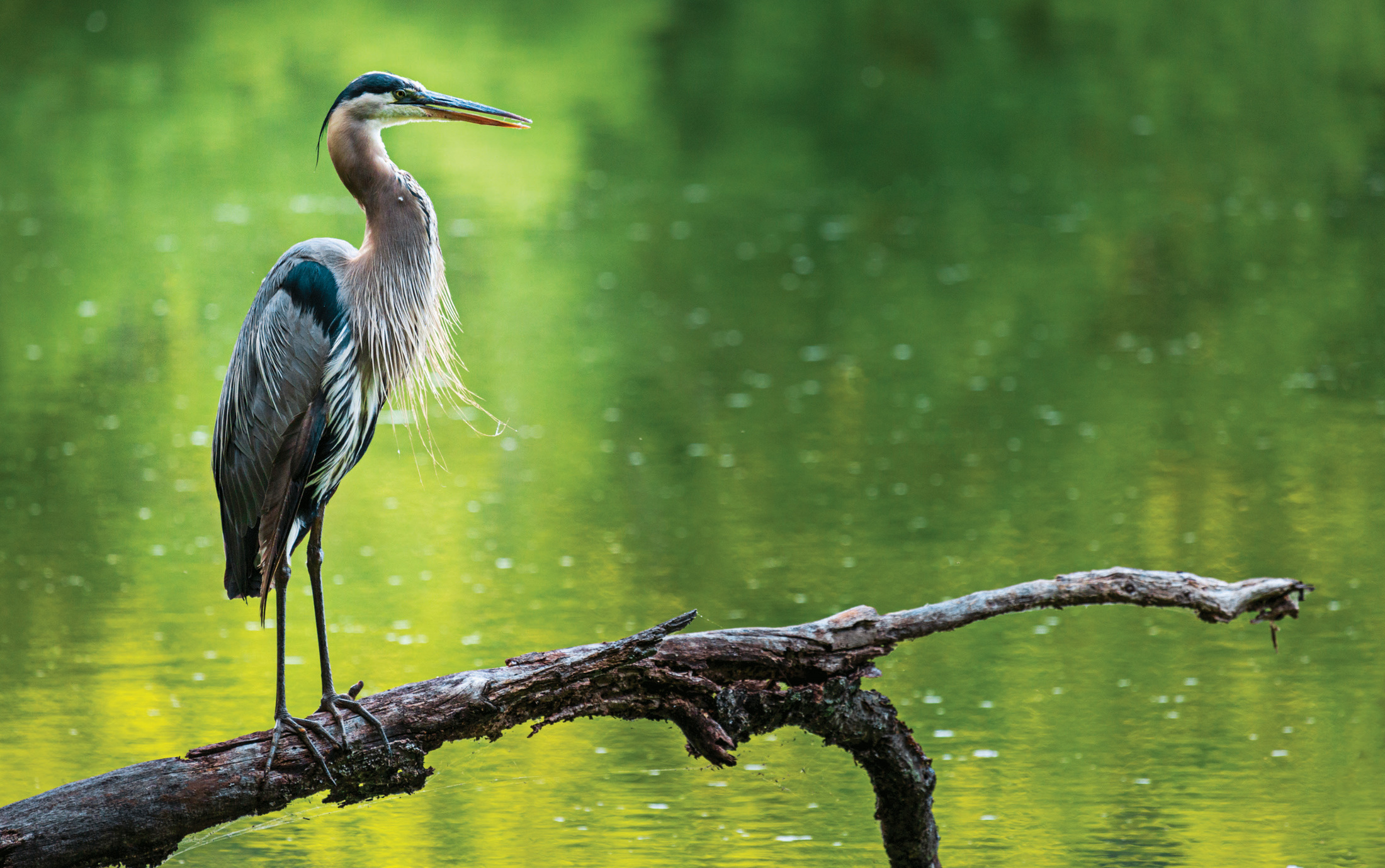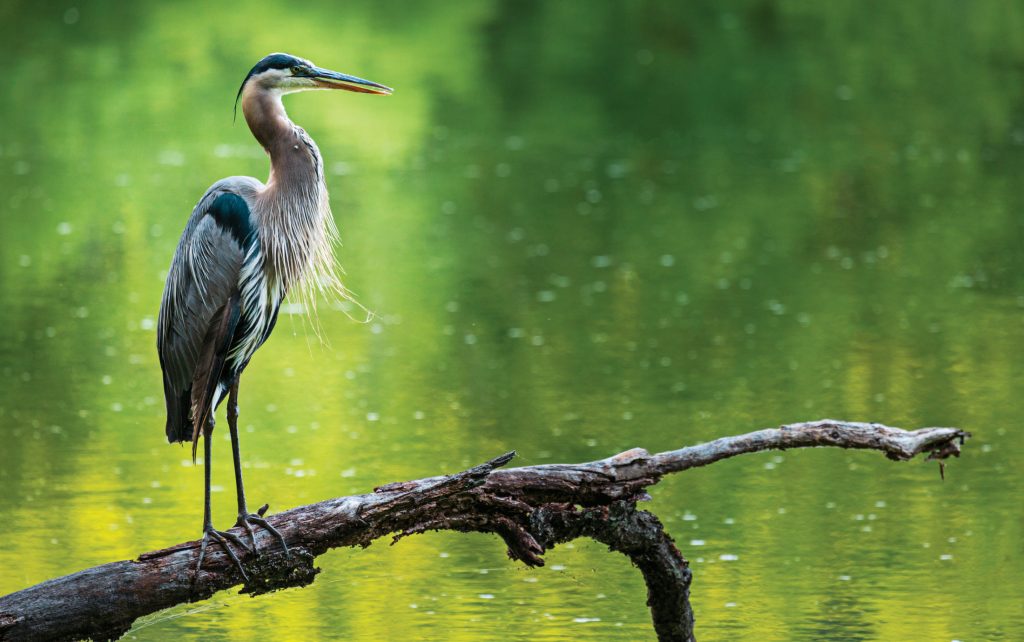“Great Blue Heron” by Robin Conover Canon EOS 5D Mark III EF 100-400 mm, 4.5-5.6 L lens at 400 mm ISO 800, fl8 at ½00th of a second, Gitzo tripod
Walking along the lakeshore, I noticed this beautiful, late-afternoon reflection beginning to dance across the water’s surface. I knew this time of day at Nashville’s Radnor Lake would lend itself to nice light and, hopefully, interesting subjects.
In photography, as in life, keeping things simple and focused are two qualities that usually lead to successful outcomes. For example, a simple, uncluttered background can make or break an image. It’s actually one of the first elements I look for when I begin to compose an image.
As in the photo above, the background can both simplify an image and make the subject stand out. A cluttered background can complicate a composition and draw attention away from the subject.
In this case, I saw the background first and then the dead tree hanging over the water. I stayed in the area for about 30 minutes, trying to will a subject to appear. Luckily, this blue heron cooperated by flying into the scene and landing in a perfect spot just as the light was beginning to fade.At first glance through my viewfinder, it was an interesting shot. I had the image framed using the rule of thirds and then noticed the heron’s head was over the darker area of green in the background. I slowly took two steps to my right, quietly repositioning my camera and tripod so that the heron was framed by the lighter area of green. This was a subtle but important move to place the subject against the lighter part of the background.
Controlling the depth of field, or the area that is in sharp focus, is another technique I used to define the subject in this image. Using a 100-400 mm telephoto lens significantly limited the depth of field, blurring the background while keeping just the heron in sharp focus.
Photographing nature, you never really know what will present itself at any given time. Being prepared for the unexpected while understanding the basics will increase your chances of success in just about any endeavor — and especially in photography.
Sometimes the best photographs happen right in front of you. Taking time to refine what’s given to you can make all the difference.




